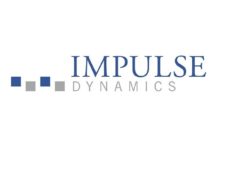
We are standing at a crossroads of non-invasive imaging technologies in the field of electrophysiology. Advances in cardiac magnetic resonance imaging (CMRI) mean that it is now possible to delineate scars utilising gadolinium late enhancement and T1 mapping; writes Pier Lambiase (UCL & Barts Heart Centre, London, UK) for Cardiac Rhythm News.
We can also utilise these data both to predict the likely lesion depth which will be successful in achieving block for a re-entrant circuit as well as potentially resolve channels in epicardial ventricular sites that can support ventricular tachycardia (VT).
Challenges in optimising image registration and resolution are being addressed as these techniques are positioned to play an ever increasing role in peri-procedural planning with three dimensional reconstruction of the substrate. There have also been substantial developments in the evolution of cardiac mapping over the past 12‒24 months involving the new mapping system, Rhythmia (Boston Scientific) and software developments from both Carto (Biosense Webster) and EnSite Precision (St Jude Medical) to enhance rapid automated high density mapping with bipolar and multipolar catheters. These systems enable extremely high fidelity substrate maps to be created with demarcation of late potentials and infarct borderzones enabling precise definition of regions likely to support arrhythmia. However, despite their enhanced resolution and capacity to rapidly create extremely detailed and informative activation maps, these systems still suffer from the limitation that they cannot map transient or haemodynamically unstable rhythms, which can be difficult to reproduce in the cathlab. This challenge was initially addressed using the non-contact EnSite mapping array from St Jude Medical and, although still employed for ventricular ectopic mapping in some centres and research applications, it seems to have declined in use. This may be related to the progressive lack of familiarity with the technology, demands of manipulating catheters around the array or advances in basket mapping catheter technology particularly in the atria in the quest to identify potential “rotors” responsible for driving atrial fibrillation (AF).
However, more recently electrocardiogram (ECG) imaging technology has become available with the ECVUE system (Medtronic) to enable epicardial panoramic mapping of both the atria and ventricles which has a number of advantages over other contact mapping systems. The system requires a high density multi-electrode jacket and patient cardiac geometry using a computed tomography (CT) scan to create an inverse solution derived unipolar map of activation on the epicardium. This enables global mapping of all four cardiac chambers making it suitable for both identifying isolated atrial and ventricular ectopic foci as well as macro re-entrant tachycardias (with the caveat that septal sites may be more difficult to resolve). A large body of pre-clinical research pioneered by professor Yoram Rudy (Washington University, St Louis, USA) underlies this technology, and this has been followed by initial clinical validation of the system in mapping ectopy, VT, as well as emerging applications for atrial fibrillation.
One strength lies in the ability to map haemodynamically unstable rhythms to enable rapid identification and targeting of a region of interest for VT ablation (see Figure 1). At present, VT ablation is divided into two principle approaches—to map a stable circuit or employ pace mapping to identify VT origins in combination with substrate ablation. The latter has a number of disadvantages in requiring long procedure times, in the imprecision of pace mapping and extensive ablation to target pro-arrhythmic substrate and there is considerable uncertainty as to how much ablation is required to achieve clinical success ie. no recurrence of VT as well as the question of optimal sites for ablation. Although late potentials/local abnormal ventricular activities (LAVAs) are usually targeted and there is good evidence that their full abolition results in lower recurrence rates, many may represent bystander areas and extensive ablation of large regions of scar is required with the inherent limitations in achieving transmural lesion delivery as well as the risks of prolonged procedures. This becomes particularly challenging if there are multiple epicardial scars as recognised in dilated cardiomyopathy cases where extensive ablation may be required. Recent studies with ECG imaging in Brugada Syndrome and Long QT have demonstrated that regions of steep activation and repolarisaton gradients can be identified and, in the case of Brugada Syndrome, it is known that conduction abnormalities in the right ventricular outflow tract are the origin of VT and ventricular fibrillation (VF). These anomalies cannot be resolved with CMRI, but these data demonstrate that the identification of epicardial pro-arrhythmic substrates is feasible with this technology. The challenge lies in developing criteria to predict whether this substrate is able to support VT or lead to VF.

Over the years, a plethora of surface ECG biomarkers have been proposed as biomarkers of sudden cardiac death risk including T wave alternans, T-peak-T-end, late potentials, etc. Some have gained a degree of traction but are yet to be employed in mainstream practice. ECG imaging technology could enable both the development of more refined biomarkers and the identification of the key pro-arrhythmic sites to target treatment. At present, CMRI is able to define dense scar and borderzone regions of infarcts—the evolution of computational modelling which can be employed to parameterise scar conductivity means that we are entering an era where substrate imaging can provide insights into the probability of ventricular arrhythmias and likely origin enabling personalisation of therapy. Indeed, work from professor Taryonova’s research group has recently successfully predicted the origin of VT circuits based on CMRI scar data alone as well as the probability of inducing VT/VF. A key question remains as to whether predictive modelling will be purely structurally based or need refinement with electrophysiological parameters. This has critical implications for risk stratification, patient selection and procedural planning. The challenge lies in identifying the simplest biomarkers that can be widely applied for population screening and also refining modelling and mapping strategies to enable precise targeted therapy ideally using a pre-operatively planned non-invasive approach or integrating focused rapid high density mapping during unstable VTs informed by the baseline structural and electrical substrate characteristics. Through the careful evaluation of these imaging and new mapping technologies we are in a strong position to achieve these goals.
References:
- Andreu D et al. Europace 2015;17(6):938‒45
- Burnes JE et al. Circulation 2000;102:2152–2158
- Ghanem RN et al. HeartRhythm 2005;2:339–354. doi: 10.1016/j.hrthm.2004.12.022
- Han C et al. HeartRhythm 2011;8:1266–1272. doi: 10.1016/j.hrthm.2011.03.014
- Deng D et al. Front Physiol 2015;13;6:282. doi: 10.3389/fphys.2015.00282. eCollection 2015
- Yamashita S et al. Circ Arrhythm Electrophysiol 2016;9(7). pii: e003901. doi: 10.1161/CIRCEP.116.003901
- Silberbauer J et al. Circ Arrhythm Electrophysiol 2014;7(3):424‒35. doi: 10.1161/CIRCEP.113.001239
Pier Lambiase is professor of Cardiology at UCL & Barts Heart Centre, London, UK Acknowledgements: Adam Graham (UCL & Barts Heart Centre) for assistance in creating figures. Mehul Dhinoja and Claire Martin for assistance during VT ablation case example.












